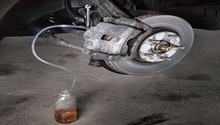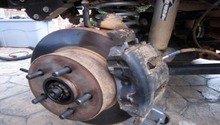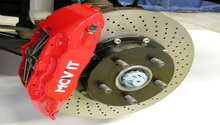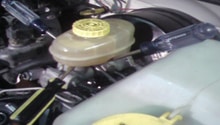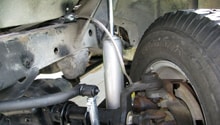Jeep Grand Cherokee 1999-2004: How to Replace Brake Fluid
Replacing the brake fluid in the Jeep Grand Cherokee ensures effective braking. Read on to learn how to replace the brake fluid yourself.
This article applies to the Jeep Grand Cherokee WJ (1999-2004).
Replacing the brake fluid is a very important piece of maintenance. After roughly 30,000 miles, the brake fluid absorbs moisture, which makes its boiling point much lower, and thus affecting the brake pedal feel as well as the brake's performance. Replacing the fluid is a simple procedure that requires a few hours of your time. After replacing the brake fluid with fresh new fluid, you will have to bleed the brakes to get rid of any air that altered the system. The brake system is a pressurized system, so any air directly affects its performance and feel. The bleeding process is just as simple and doesn't take much time. Read on to learn how you can replace your Jeep Grand Cherokee's brake fluid.

Materials Needed
- Jack, jack stands, and tire iron (optional)
- 3/8 wrench
- Turkey baster
- Clear hose
- Bottle
- Rag
- Brake fluid
Step 1 – Remove brake fluid from reservoir
Open the hood and locate the master cylinder/brake fluid reservoir. Use your turkey baster to siphon out the old brake fluid. Remove as much fluid as you can from the reservoir.
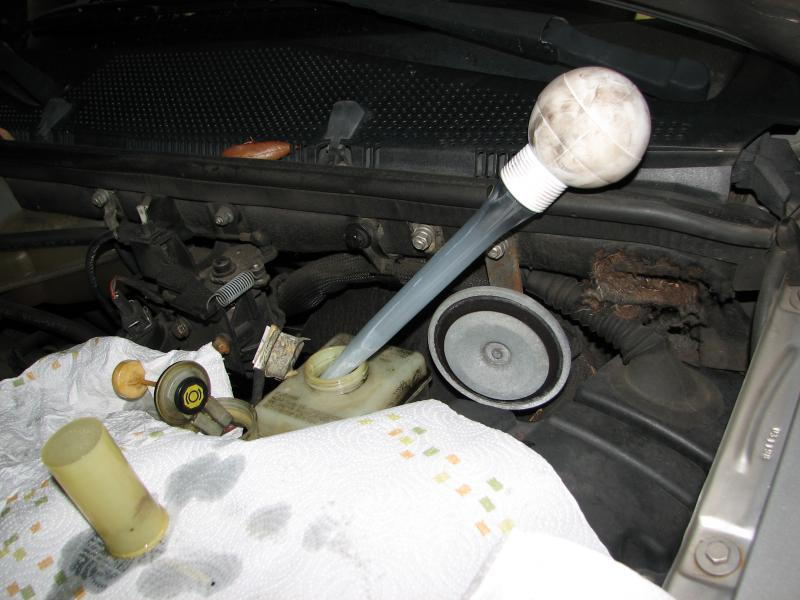
Step 2 – Fill with new fluid
After you've removed as much fluid as you can from the reservoir, pour new brake fluid until the max line. Keep a rag handy in case you spill fluid because brake fluid is corrosive to the your car's paint.

Step 3 – Bleed your brakes
Now that you've added new brake fluid in your system, it's time to bleed your brakes to get rid of any air or old brake fluid.
Bleed the caliper on each wheel, starting with the passenger's rear, driver's rear, passenger's front, and end with the driver's front.
Locate the bleeder screw on each caliper, then connect the clear hose to it, and connect the other end of the hose to a bottle. Ask a friend to pump the brake pedal a few times, then keep it pressed. Loosen the bleeder valve using your wrench and watch the brake fluid bleed. Keep an eye, and as soon as you start seeing clear, new fluid, tighten the screw and then ask the friend to let go of the brakes. Repeat the process on all four calipers, but keep adding brake fluid in the master cylinder between each wheel. If the fluid in the reservoir gets too low, you will need to repeat the whole process.
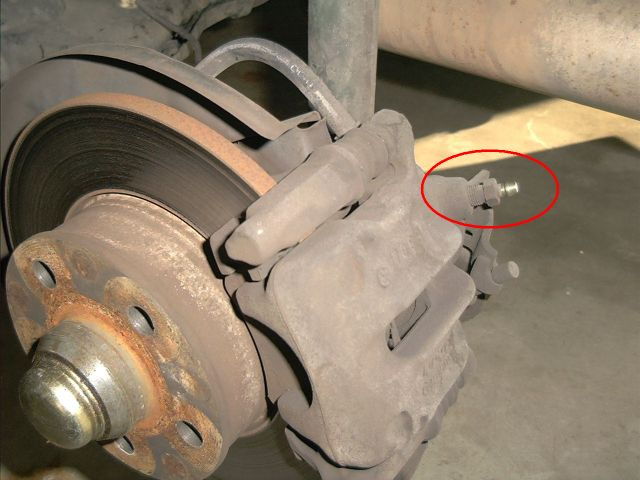
Figure 3. Bleeder screw. 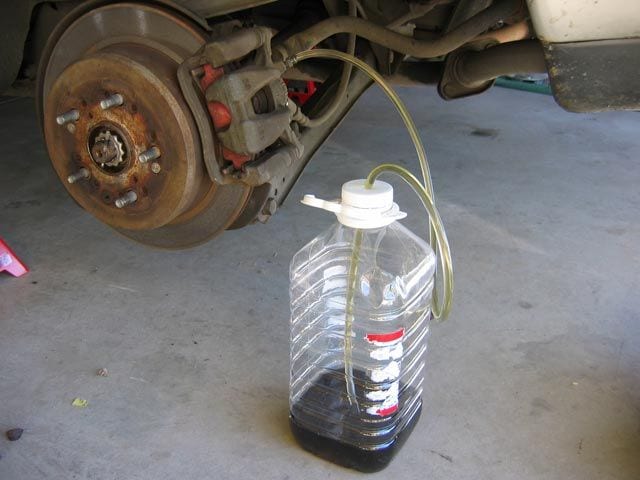
Figure 4. Bleed your brakes.
Pro Tip
You can access the bleeder screw without raising the car or removing the wheel. However, if you want more room, then raise the car and secure it on jack stands.
Related Discussions
- Brake Fluid - CherokeeForum.com
- Bleeding Brakes - CherokeeForum.com
- How Much Brake Fluid - CherokeeForum.com

